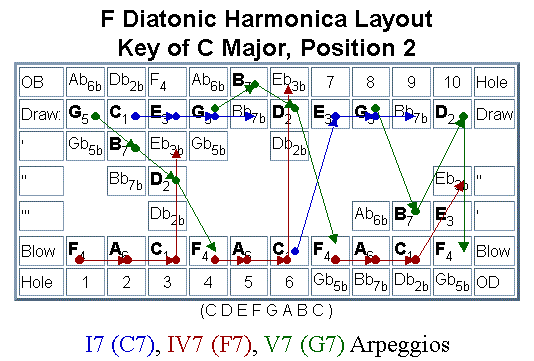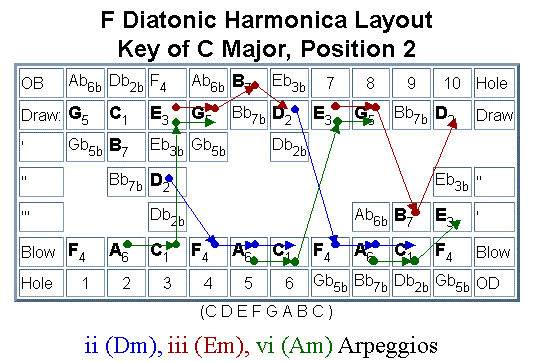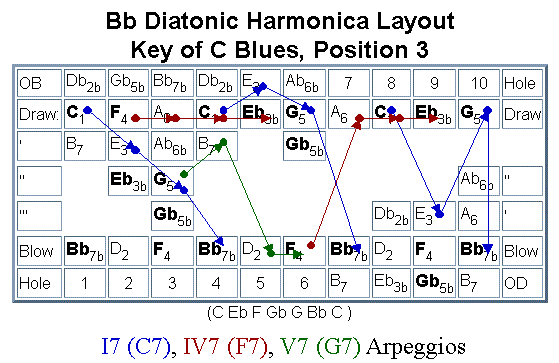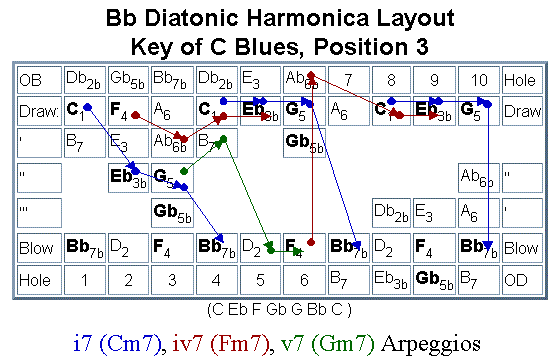
Here are the arpeggios for the basic I, IV, V chords in 2nd position
(notes for the key of C).
|
|
|
|
|
|
|
|
|
|
|
C E G |
|
|
Middle |
|
|
9> 10>' n/a |
|
|
F A C |
|
1> 2> 3> | Middle | 4> 5> 6> |
|
|
|
|
G B D |
|
|
Middle |
|
|
|
Here are the arpeggios for the dominant I, IV, V chords in 2nd position
(notes for the key of C).
|
|
|
|
|
|
|
|
|
|
|
C E G Bb |
|
|
Middle |
|
|
9> 10>' n/a n/a |
|
|
F A C Eb |
|
1> 2> 3> 3' | Middle | 4> 5> 6> 6># |
|
|
|
|
G B D F |
|
|
Middle |
|
|
|
Here is a diagram showing where the arpeggios lie in your harp. Start at a filled circle and follow the arrows. By the way, you can practice these arpeggios on any key harp--you don't have to use an F harp--it's just easier to think in the key of C.
One of the interesting things about these diagrams is that you can easily see how the arpeggios relate to each other and connect. Seeing and visualizing these relationships is very important for improvising and knowing how to jam over chords.

Here are the arpeggios for the minor ii, iii, and vi chords in 2nd position
(notes for the key of C).
|
|
|
|
|
|
|
|
|
|
|
D F A |
|
|
Middle |
|
|
10 10> n/a |
|
|
E G B |
|
n/a 1 2' | Middle | 3 4 5># |
|
|
|
|
A C E |
|
|
Middle |
|
|
|
Here are the arpeggios for the dominant minor ii, iii, and vi chords
in 2nd position (notes for the key of C).
|
|
|
|
|
|
|
|
|
|
|
D F A C |
|
|
Middle |
|
|
10 10> n/a n/a |
|
|
E G B D |
|
n/a 1 2' 3" | Middle | 3 4 5># 6 |
|
|
|
|
A C E G |
|
|
Middle |
|
|
|

The major scale arpeggios can be played in 3rd position with the use
of the hole 5 overblow to get the major 3rd instead of the naturally occurring
minor 3rd. It is this natural minor 3rd in hole 5 that makes 3rd
position a natural choice for playing with minor chords and minor scales.

The following diagram shows the arpeggios for the minor i, iv, v chords
in 3rd position. Here, the iv chord minor 3rd requires the hole 6
overblow.
